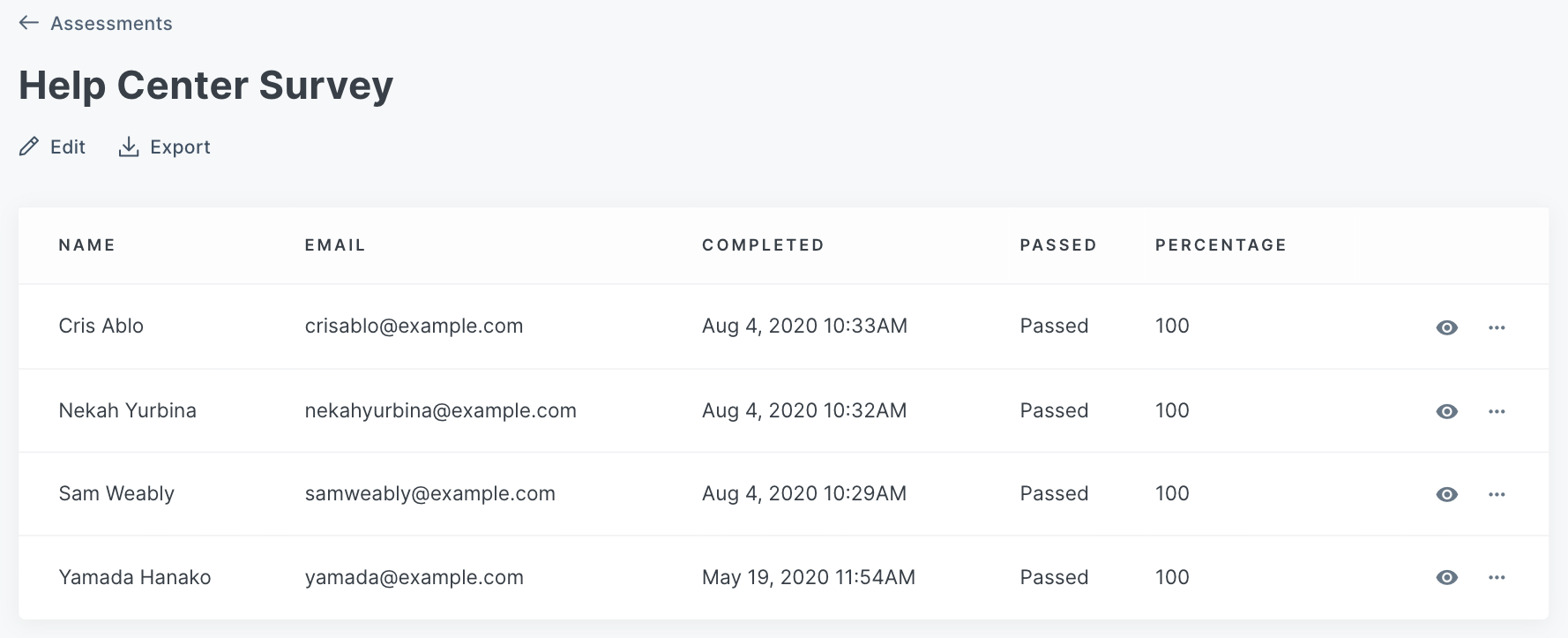Example of Sales Funnel That Converts High-Ticket Clients Like Clockwork
Most entrepreneurs don’t have a sales problem. They have a sales funnel problem.
They copy tactics that work for low-ticket offers—like ebooks, endless email sequences, and “just get them on the phone” strategies.
But here’s the truth no one tells you:
High-ticket clients don’t buy like low-ticket buyers.
They don’t sign up for free stuff. They don’t read 27 nurturing emails. And they definitely don’t waste time on a “free consultation” with a stranger who’s trying to convince them to buy.
High-ticket sales are about one thing: certainty.
Certainty that you’re the authority. Certainty that your offer works. Certainty that your time—and theirs—is worth it.
And your sales funnel must reflect that.
So in this article, I’ll show you an example of a sales funnel that’s built for one purpose:
To filter, pre-sell, and close premium clients like clockwork— without chasing leads, lowering prices, or wasting time on unqualified calls.
Let’s break it down.
Effective lead generation is a critical first step in building a high-ticket sales funnel, setting the stage for filtering and qualifying premium clients.
Table of Contents
- Why High-Ticket Sales Funnels Are a Different Game
- Step 0: Diagnose Before You Prescribe
- Step 1: Create a Lead Magnet That Qualifies, Not Attracts Everyone
- Step 2: Pre-Sell Before the Call
- Step 3: The High-Ticket Closing Call
- Pricing, Packaging & Scarcity
- Real-World Sales Funnel Examples That Convert
- The Role of Data: Turning Insights into High-Ticket Wins
- Optimize & Measure What Works
- 3 Mistakes That Kill High-Ticket Funnels
- Build Your High-Ticket Funnel Today
Why High-Ticket Sales Funnels Are a Different Game
Most sales advice fails because it assumes every product sells the same way.
But selling a $7 ebook and selling a $10,000 offer are not the same game. They don’t even follow the same rules.
High-ticket sales funnels aren’t just about more value—they’re about more certainty. They must convince a smarter buyer to make a bigger decision with more risk.
This is why the old tactics—like lead magnets that promise “5 Tips to Make More Sales”—don’t work. Not for high-value clients. Not for premium offers.
Instead, your marketing efforts need to speak to clients who are already successful. Identifying and understanding your target audience is crucial when designing high-ticket sales funnels, so your message resonates with the right people. People who don’t chase discounts. People who value time over freebies.
The goal of your funnel is not to educate. It’s to filter and frame—so only the right people get through.
And that’s where most funnels break down.
If you treat a high-ticket client like a low-ticket lead, you’ll lose them before they even book a call.
Let’s look at what actually works.
Step 0: Diagnose Before You Prescribe
Before you ever build a high ticket sales funnel, you need to stop thinking like a marketer—and start thinking like a doctor.
Doctors don’t pitch solutions before understanding the symptoms. They ask questions. They look deeper. That’s how they earn trust.
Your funnel should do the same.
An effective sales funnel starts with a deep understanding of client data and needs.
Start by identifying your ideal clients’ pain points—not surface-level frustrations, but the deeper emotional costs:
- What’s this costing them financially?
- What are they afraid will happen if nothing changes?
- What would real transformation look like?
This is not optional. If you don’t understand what’s truly at stake for your buyer, no funnel—no matter how “optimized”—will convert.
That means doing the work:
- Interview your best clients
- Study your market
- Map the buying process from awareness to decision, making sure to understand the overall sales process so you can optimize each stage of the funnel
- Create real customer personas that reflect both logic and emotion
Because when you can describe your client’s problem better than they can… You don’t need to convince them to buy. They’ll ask you how to move forward.
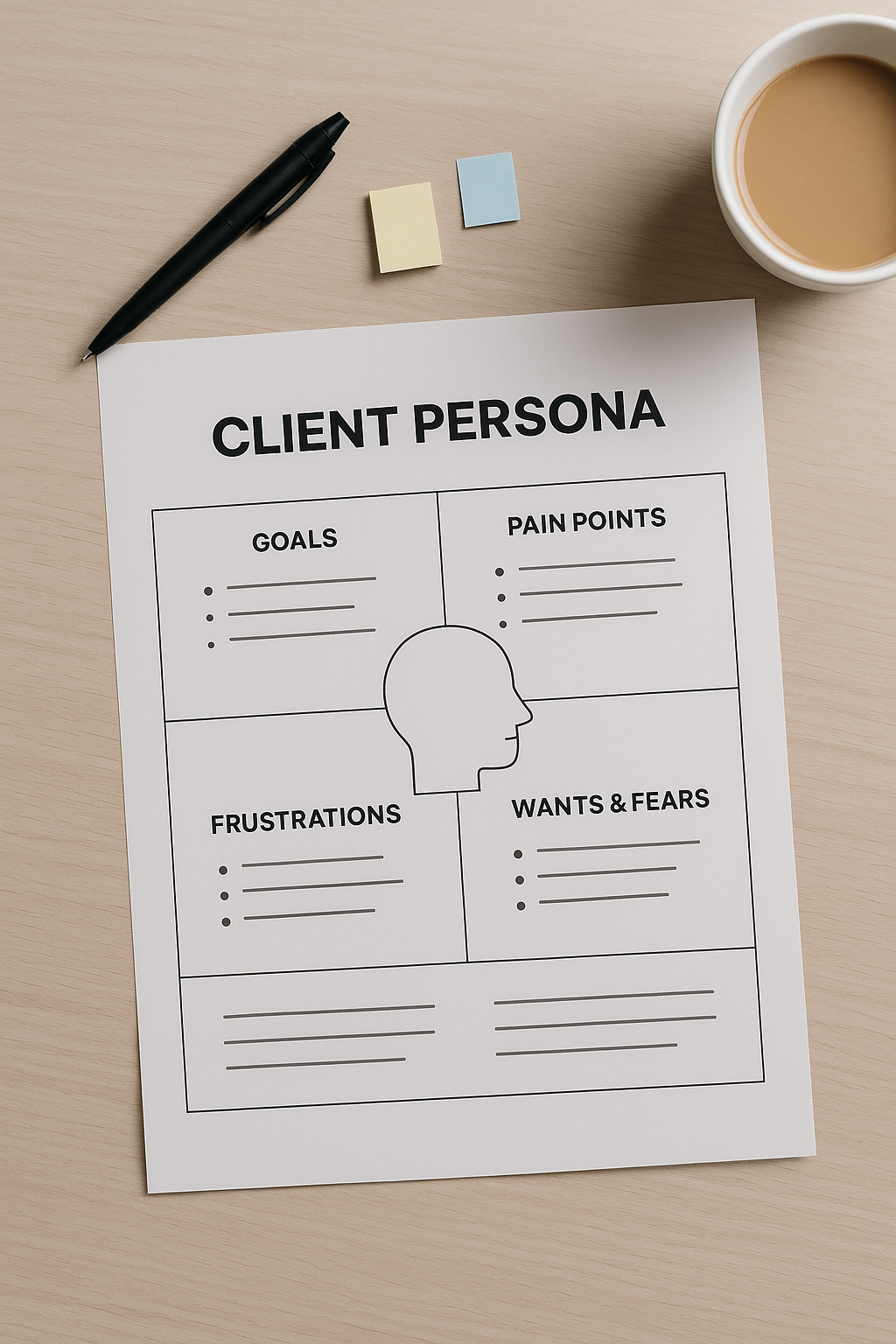
Step 1: Create a Lead Magnet That Qualifies, Not Attracts Everyone
Most lead magnets are designed to get as many people as possible into your funnel.
That’s a mistake.
Because when you’re selling high ticket offers, more leads isn’t better—better leads are better.
The purpose of your lead magnet isn’t to educate, impress, or entertain. It’s to filter.
This is why the old tactics—like lead magnets that promise “5 Tips to Make More Sales”—don’t work. Free lead magnets may attract a large volume of leads, but for high-ticket funnels, you need more selective qualification assets that filter for quality over quantity.
You don’t want freebie-seekers. Instead, focus on identifying and qualifying potential customers who are genuinely interested and capable of investing.
You want qualified leads—people who are already problem-aware, value-driven, and ready to invest.
So instead of giving away another checklist or free PDF… do this:
- The Application FunnelSend leads to a short, powerful application form before they can even book a call. This positions you as the prize.
- The Authority PDFA 3–5 page document that frames your methodology, showcases proof, and disqualifies low-quality prospects.
- The Private TrainingA short (10–15 minute) video that sets expectations, delivers insight, and creates pre-call buy-in.
These aren’t gimmicks. They’re gatekeepers.
And here’s your pro move: Include qualification questions early in your funnel. Ask things like:
- “Are you currently making over $100K per year?”
- “Do you have a minimum $10K budget to invest in your business?”
This simple shift saves you from wasting time on tire-kickers—and makes serious prospects take you seriously.
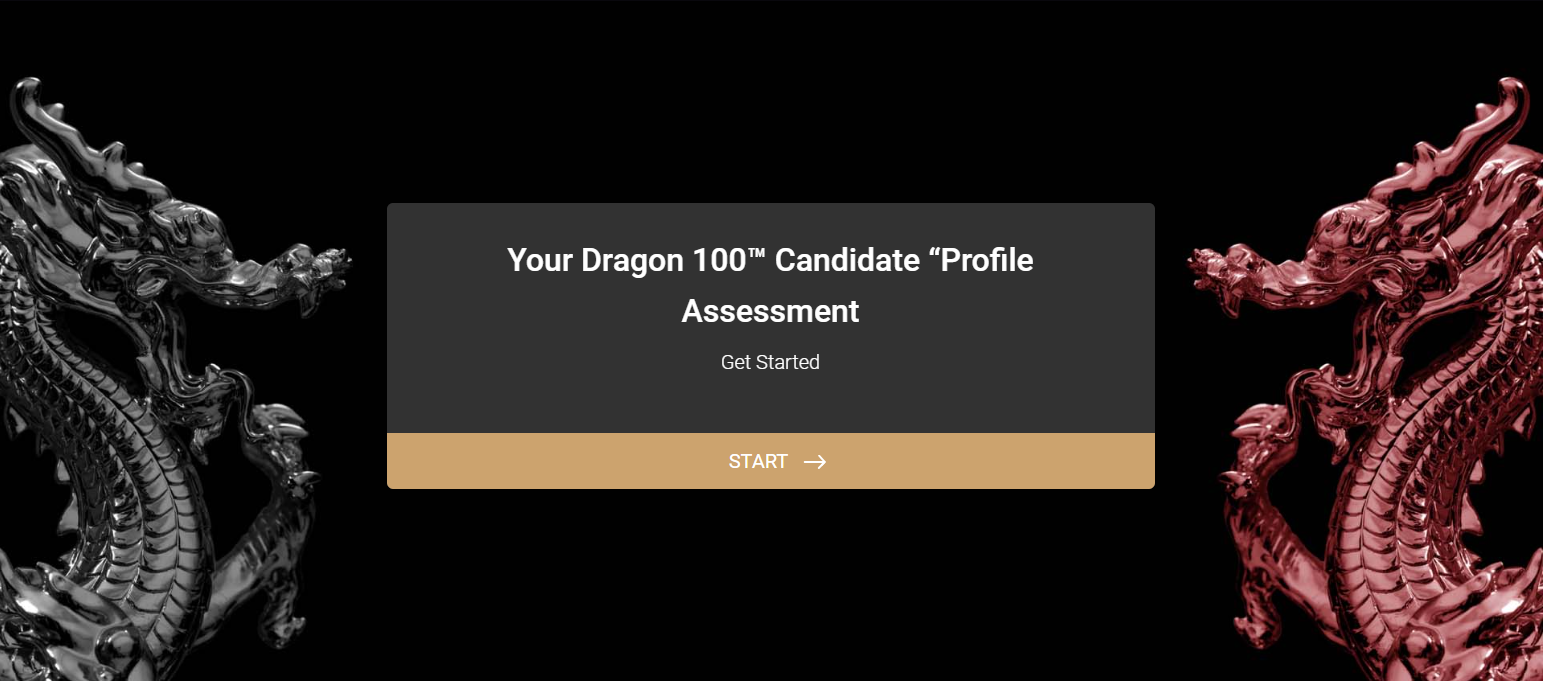
Step 2: Pre-Sell Before the Call
Here’s where most high ticket sales funnels fall apart:
They drive traffic to a call booking page… …but the prospect shows up cold, skeptical, and full of objections.
Why?
Because they weren’t pre-sold.
High-ticket clients don’t want to be convinced. They want to feel like they’re the ones chasing you.
That’s why this step is mission-critical.
Before the call even happens, your funnel should:
- Reinforce exclusivity→ Use a confirmation page that says, “Not everyone gets accepted.”
- Establish authority→ Show short, punchy case studies from real clients—preferably similar to the lead.
- Increase show-up rates→ Use a reminder sequence via email and SMS that reminds, re-frames, and reaffirms the value of the call.
- Set expectations with a pre-call video→ Tell them what to expect, how to prepare, and what happens next. This alone can double your close rate.
- Guide prospects with dedicated landing pages→ Use specialized landing pages tailored to different user intents to pre-sell your offer, increase engagement, and move visitors toward booking a call.
Because by the time they talk to you, they should already want in. The call isn’t about “selling.” It’s about confirming they’re a fit.
A great pre-sell sequence makes sales calls feel like formalities.
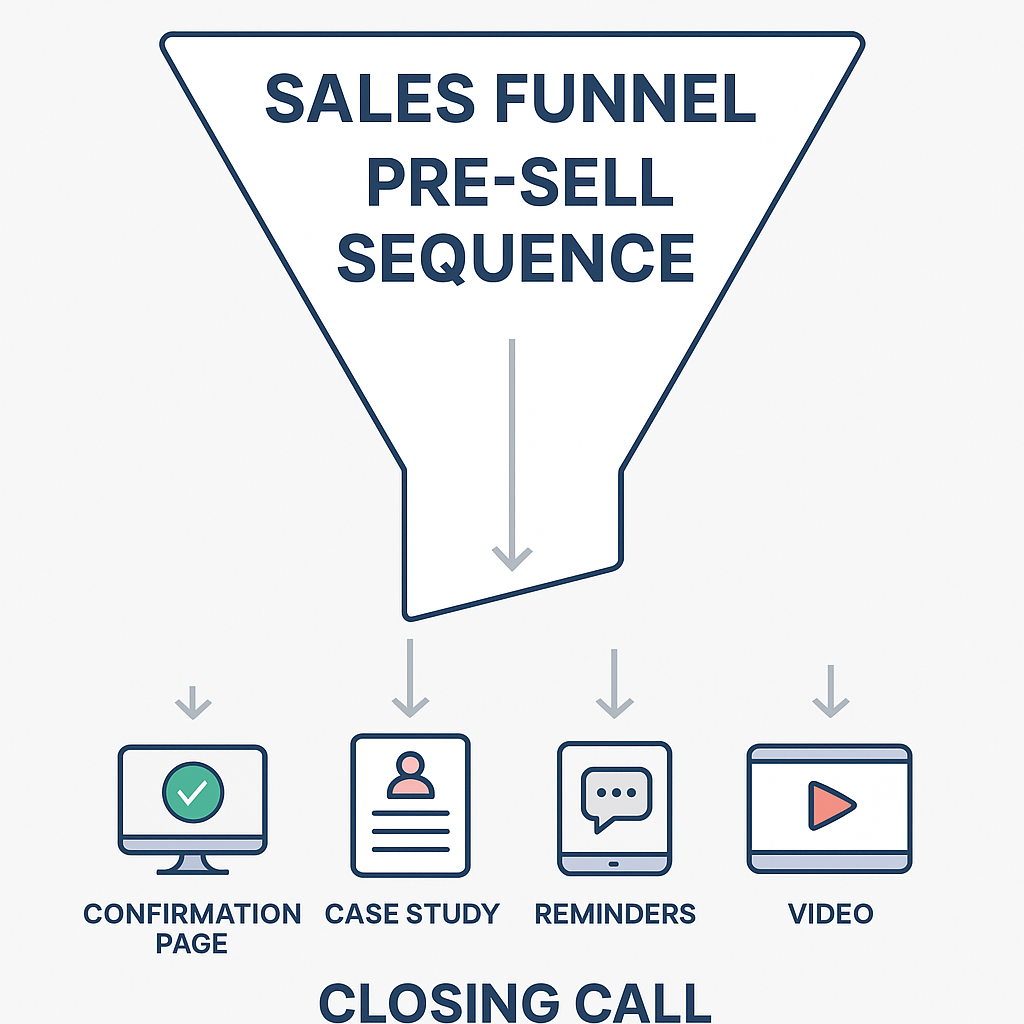
Step 3: The High-Ticket Closing Call
If you’ve done everything right up to this point, the sales call shouldn’t feel like a pitch. It should feel like a final interview—with your prospect trying to convince you to let them in.
But most coaches, consultants, and closers blow it here. They start “selling” the offer… …when the prospect is already halfway in the door.
In larger organizations, sales reps and the sales team play a critical role at this stage by engaging with leads, handling inquiries, and ensuring a smooth closing process for high-ticket offers.
Here’s what goes wrong:
- They over-explain and confuse the buyer
- They lose control of the frame
- They hesitate when it’s time to ask for the sale
That’s why every high ticket sales call needs structure. Specifically, this one:
The Elite Closer’s 4-Step Call Framework:
- Frame the call
→ “Let’s see if this is the right fit for both of us.” - Dig into pain
→ Help them feel the cost of staying where they are. Don’t lecture. Ask sharp questions. - Present the offer
→ Clear. Concise. High-stakes. Focus on the transformation, not the features. - Close with certainty
→ Don’t chase. Don’t discount. Ask for the decision and let silence do the work.
And here’s your pro move:
If someone isn’t a fit—tell them.
Send them to a lower-tier offer or invite them to reapply in the future.
Scarcity drives demand. Authority drives respect.
The more you say “no,” the more high-value clients will want to say “yes.”
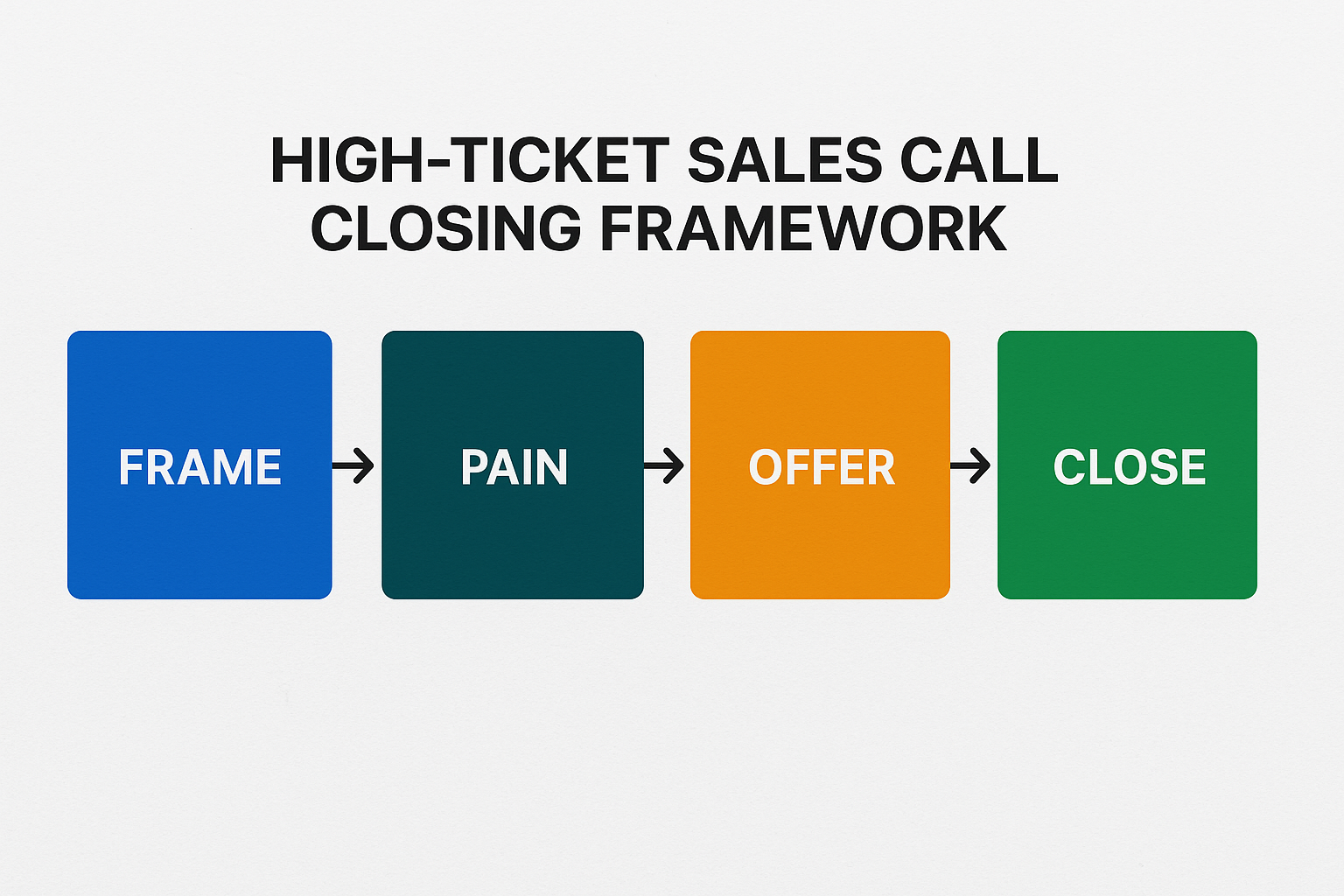
Pricing, Packaging & Scarcity
If your sales funnel is built to attract high ticket clients, then your offer needs to look and feel like it belongs at the top.
That means no vague pricing. No “schedule a call to learn more.” And definitely no discounting to close the deal.
High-ticket pricing is about positioning. You’re not charging for your time. You’re charging for the transformation your offer creates. A higher price point requires a tailored sales strategy that focuses on demonstrating exceptional value, ensuring clients understand the unique benefits and comprehensive solutions your offer provides.

So instead of asking, “How much can I charge?” Ask: “What is the true value of this outcome to my client?”
Then match your packaging to that value:
- Bundle your offer into a clear, outcome-driven transformation
- Limit access to premium done-for-you services or private coaching
- Offer different price points only when there’s a strategic reason to do so—not because you’re afraid of rejection
- Consider bundling a high value product or premium services to enhance perceived value and justify your pricing
And don’t forget this:
Scarcity isn’t a tactic. It’s a reflection of your standards.
If you only take on 10 clients per quarter, say it. If your program is full, make them wait. If someone’s not ready, don’t offer a cheaper option—offer nothing. Offering premium services or transitioning from a free to a paid service can further increase exclusivity and drive demand for your high-value solutions.
Because when you sell with certainty, your premium pricing becomes a signal of quality. Selling high value products relies on building trust, strategic pricing, and consistently delivering exceptional value to your clients.
Real-World Sales Funnel Examples That Convert
When it comes to building a high ticket sales funnel that delivers substantial revenue and higher profit margins, nothing beats learning from the best in the business. Let’s break down a few real-world sales funnel examples that prove just how powerful the right strategy can be for converting potential clients into paying customers.
1. Tesla’s Cyber Truck Launch Funnel Tesla’s approach to launching the Cyber Truck was a masterclass in high ticket sales. Instead of relying on endless nurturing or freebie lead magnets, Tesla created a streamlined sales funnel: a dedicated landing page, a clear value proposition, and a simple $1,000 deposit to reserve a spot. This direct, no-nonsense funnel tapped into customer pain points—exclusivity, innovation, and status—resulting in over 2 million pre-orders. The lesson? An effective sales funnel for high ticket products doesn’t need to be complicated; it needs to create urgency and certainty.
2. Trek Bikes’ High-End Bicycle Sales Funnel Trek Bikes sells high ticket bicycles, some priced at $12,000 or more. Their sales funnel is designed to guide potential clients from initial interest to checkout with minimal friction. Starting with targeted traffic, Trek’s homepage acts as a qualifying landing page, leading buyers through a seamless checkout process. Strategic cross-sells and upsells further increase average order value, showing how a well-structured sales funnel can turn high ticket browsers into loyal, paying customers.
3. Michael Rozbruch’s Tax Resolution Sales Funnel Michael Rozbruch, a leader in tax resolution, built a high ticket sales funnel that educates and qualifies leads at every step. His funnel starts with targeted traffic, moves to a compelling homepage, and then to a webinar landing page that acts as a high-value lead magnet. By addressing specific pain points and offering a clear solution, Rozbruch’s funnel converts potential clients into high ticket sales with authority and trust.
4. ExcelHelp’s Custom Enterprise Software Sales Funnel ExcelHelp targets Fortune 500 companies with high ticket, custom software solutions. Their sales funnel begins with targeted traffic, a professional homepage, and a lead magnet tailored to decision-makers’ pain points. The funnel’s structure ensures only qualified leads progress to the checkout stage, maximizing conversions and driving substantial revenue.
These sales funnel examples prove that understanding your customer’s pain points and motivations is the foundation of every high ticket sales funnel. When you build your funnel to filter, qualify, and address what matters most to your ideal clients, you create effective sales funnels that consistently convert potential clients into high ticket, paying customers—and set your business up for higher profit margins.
The Role of Data: Turning Insights into High-Ticket Wins
If you want your high ticket sales funnel to outperform the competition, data isn’t just helpful—it’s essential. The most effective sales funnels are built on a foundation of data-driven insights that reveal exactly what your high ticket clients want, where they hesitate, and how to move them from interest to investment.
Tracking Key Metrics Start by tracking the numbers that matter: revenue, customer acquisition cost, and sales cycle length. These metrics show you where your sales funnel is working—and where it’s leaking potential high ticket sales. By monitoring each sales funnel stage, you can spot bottlenecks and optimize for higher conversions and profit margins.
Analyzing Customer Behavior Dig deep into your clients’ pain points and motivations. Use analytics to see how potential clients interact with your landing page, sign up form, and lead magnets. Are they dropping off before booking a call? Are certain messages resonating more than others? This insight lets you refine your marketing efforts and speak directly to what your high ticket clients care about most.
Optimizing Sales Funnel Stages Every step in your sales funnel—from the first landing page to the final sign up form—should be tested and improved based on real data. Small tweaks, like simplifying your application process or clarifying your offer, can dramatically increase conversions and reduce friction for high ticket customers.
Identifying High-Ticket Clients Not all leads are created equal. Use data to segment and identify your most valuable high ticket clients. Then, tailor your marketing efforts to attract more of them—whether through targeted paid ads, personalized email marketing, or exclusive content that speaks to their unique pain points.
The bottom line: Data turns guesswork into strategy. By leveraging insights at every stage of your high ticket sales funnel, you can increase conversions, shorten your sales cycle length, and achieve higher profit margins—while delivering exactly what your high ticket clients are searching for.
Optimize & Measure What Works
A high ticket sales funnel isn’t something you build once and forget. It’s a performance engine—and like any high-performance engine, it needs tuning.
Tracking your numbers isn’t optional. It’s how you:
- Shorten your sales cycle length
- Improve lead quality
- Increase customer retention
- Boost repeat business
Here’s what to measure consistently:
- Lead-to-call conversion rate — Are your marketing efforts attracting the right traffic?
- Show-up rate — Are people taking your call seriously?
- Close rate on qualified calls — Are your pre-sell assets doing the heavy lifting?
- Refund rate or drop-off — Are you attracting the right high ticket customers?
And here’s the edge most coaches and service providers miss:
Your funnel isn’t just about conversion—it’s about clarity.
Clarity on what kind of high value clients you attract. Clarity on which message triggers action. Clarity on how to scale without more hustle.
Use digital marketing tools to drive direct traffic—paid ads, SEO, retargeting, organic traffic, search engine optimization, and social media platforms like Facebook, LinkedIn, Instagram, TikTok, and podcasts—but always check: Are those leads turning into paying clients?
Monitor your sales pipeline closely to track how leads progress through each stage and to optimize your conversion rates.
If not, fix the message. Fix the entry point. Fix the frame.
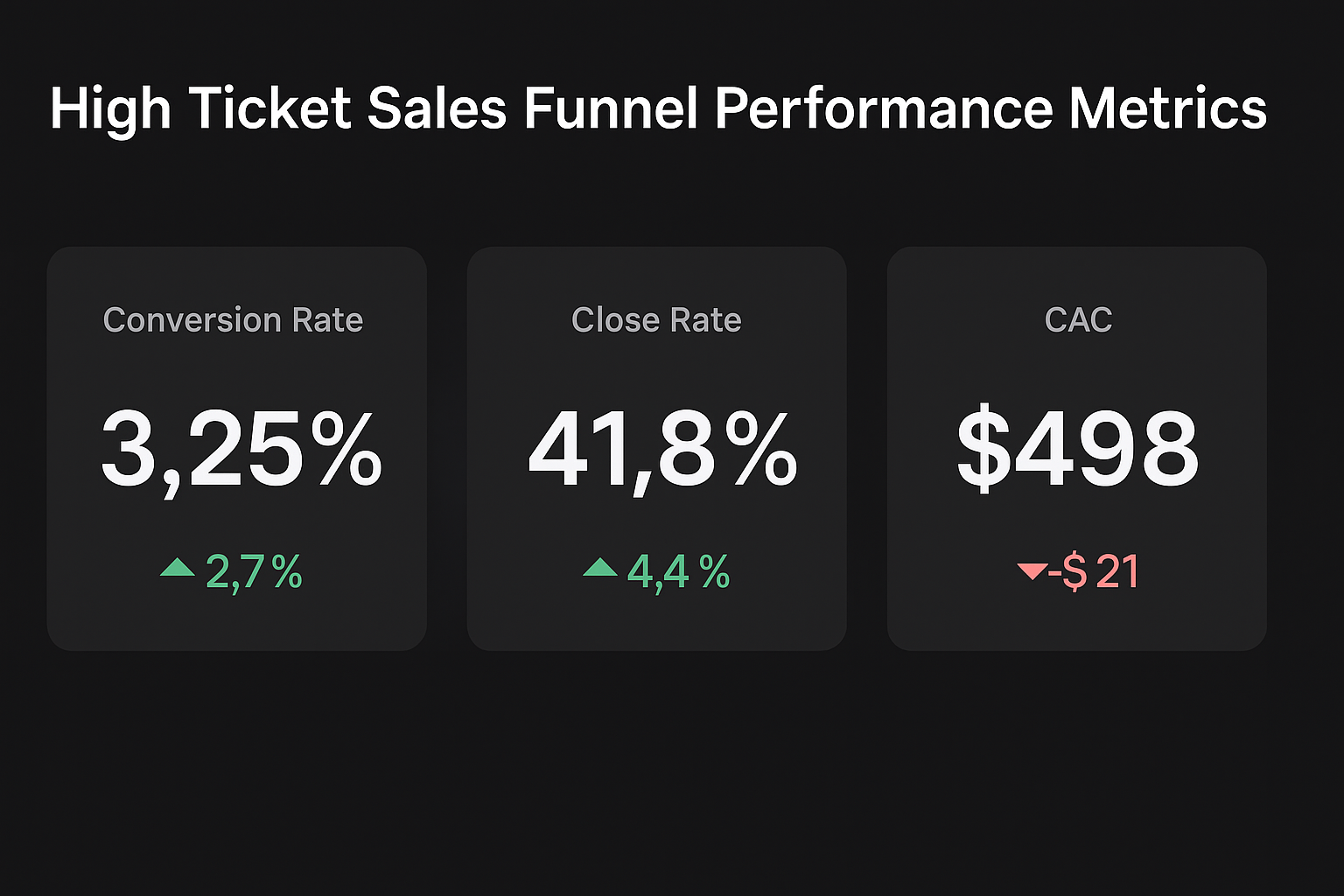
3 Mistakes That Kill High-Ticket Funnels
You can have the best offer, the perfect pitch, and an amazing product…
…but if your funnel makes these mistakes, your calendar will stay empty—and your premium clients will go elsewhere.
It’s crucial to analyze how customers respond to different funnel strategies, as understanding their reactions helps avoid common mistakes and improve conversion rates.
Mistake #1: Selling Instead of Filtering
Low-ticket funnels focus on getting leads.
High ticket funnels focus on qualifying leads.
If your funnel is trying to “convert everyone,” you’ll attract people who:
- Can’t afford you
- Don’t respect your process
- Drain your time and energy
Fix it: Add an application step with clear filters—budget, revenue level, or business type.
Mistake #2: Using Free Stuff as a Crutch
Giving away a free lead magnet might work for volume-based products. But high-ticket buyers don’t value free stuff. They value clarity. In some cases, offering a free service—such as a trial or complimentary access—can be a more strategic way to attract qualified leads, as it demonstrates value upfront and encourages conversions.
Fix it: Replace freebies with positioning assets—like a short training, authority document, or “how it works” explainer that frames your offer with certainty.
Mistake #3: Building for Clicks, Not Clients
Too many funnels are built to look good, get opt-ins, or “optimize conversions.”
But are those conversions leading to paying clients?
Fix it: Audit your customer journey.
From landing page to sales call, does every step feel elevated and intentional?
Because fewer sales from better clients beats more sales from the wrong ones—every time.
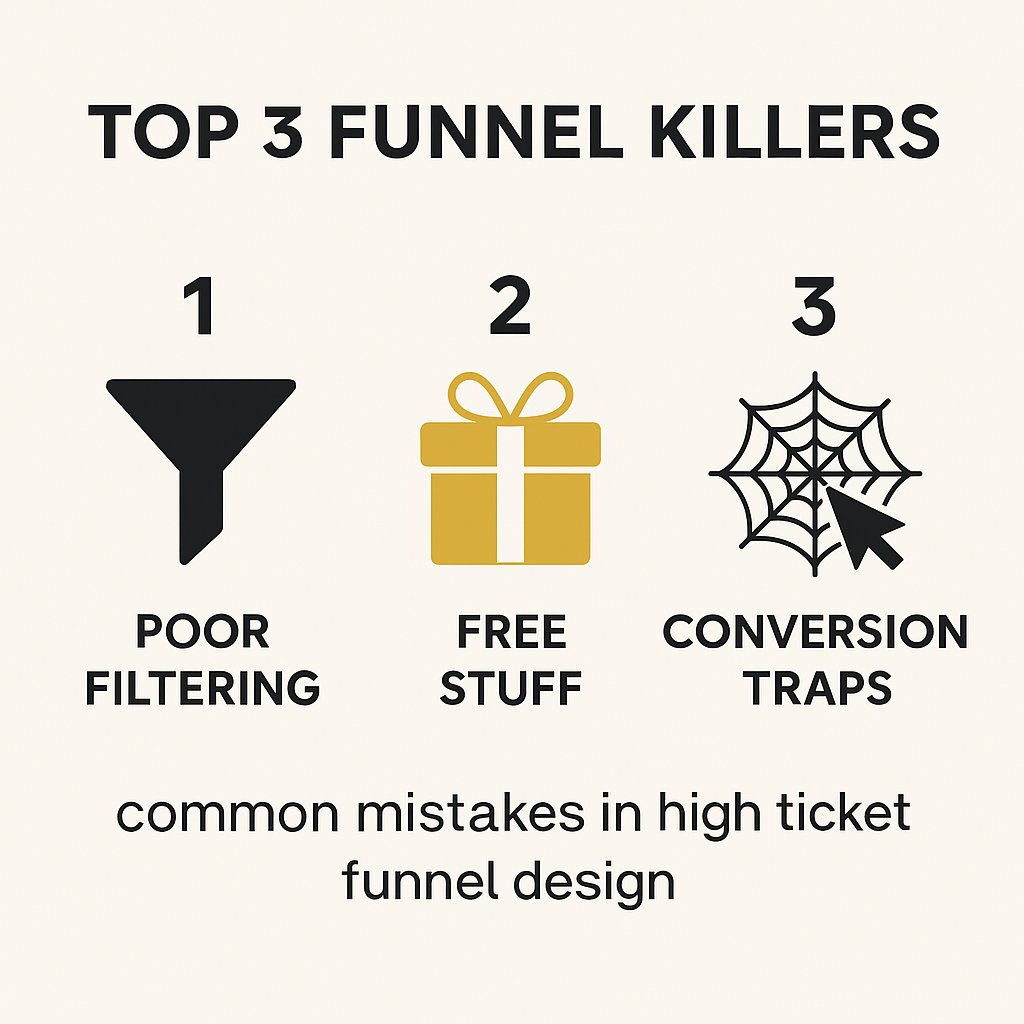
Build Your High-Ticket Funnel Today
When done right, a high ticket sales funnel becomes your silent closer.
It attracts the right people.
It filters out the wrong ones.
And it turns strangers into paying clients—without you begging for calls, chasing leads, or explaining your worth.
Let’s recap what happens when you build the right funnel:
✔ You stop wasting time on tire-kickers
✔ You fill your pipeline with qualified leads
✔ You close high-value clients who respect your time, your process, and your price
High-ticket sales funnels can be applied to a variety of business types, whether you run a coaching business, a SaaS company, or are among the small business owners looking to grow your own business. Generating high ticket leads and closing high ticket deals for your high ticket product is essential—just look at how industry leaders and successful SaaS companies implement these strategies to drive growth and long-term revenue.
And it all works because your funnel does the heavy lifting:
- Positioning you as the expert
- Pre-selling your value
- Framing the sale before the call ever begins
So if you’re ready to stop guessing, stop hoping, and finally build a sales funnel that converts like clockwork… Get access to the High Ticket Offer Formula
Discover how to craft an irresistible offer, attract premium clients, and close with certainty.





